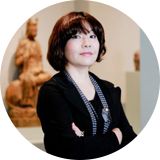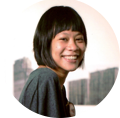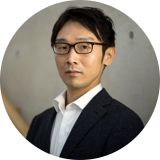SEA PROJECT Symposium
How has Japan Engaged with Contemporary Art in Southeast Asia? Panel Discussion and Q&A (4/4)

Fumio Nanjo (Director, Mori Art Museum) closing the Symposium

I think we would like to have a question from the floor.

- Audience
I have a question for the young Asian curators here today. The first is: are there many audiences of modern art in your own country or field? And second: are there possibilities for Japanese artists to participate and work with fellow artists in your own art scene not simply as donors or supporters but as independent artists?
Hello. I’m Grace from Indonesia. To quickly answer your questions: yes, there is a large pool of modern art audiences in each of our countries which is nothing new. I don’t think that needs explanation; you can try Google. And two: of course there are possibilities for Japanese artists to be individually involved in our local art scenes. I think there are actually quite a lot of Japanese individuals who have careers here in Japan and also are building careers in Indonesia. I’m sure it the he similar situation for the others from the region.
(Post script: Grace felt it is ironic to receive such a question after all the presentations today clearly demonstrated that modern and contemporary art activities existed in the region since then.)
I think exchanges have already been happening, especially since the ’80s, from a very grassroots-level among individual artists in the region and in Japan. In the Philippine context, actual artist-initiated exchanges were really more late 80s because of Baguio International Arts Festival and VIVA EXCON.
With this panel, we see a very institutional kind of support structure (The Japan Foundation and Fukuoka Asian Art Museum) and also the very grassroots approaches (NIPAF), both of which are supporting different kinds of art practices.
As for performance art, in the region, is like a gateway drug: it is the first kind of experimentation for a lot of Southeast Asian artists to develop and explore other forms of practices. So it’s the entry point to a larger contemporary art vocabulary. It’s not surprising that some young artists that Mr. Shimoda helped train eventually find themselves in more established institutions.
Thank you. Unfortunately, we are running out of time. We hope to organize another opportunity like this before July next year to better understand Southeast Asia as we work toward our exhibition. We are considering how best to communicate the knowledge and experience accumulated here to the next generation, so we hope that you will join us again for our future public programs.
Thank you very much. Director of the Mori Art Museum, Mr. Fumio Nanjo, will deliver his closing remarks.
Thank you for a day of very interesting discussion. I, too, had been at the Japan Foundation for about ten years, so I was reminded of my time in the organization.
The ASEAN Culture Center was launched in 1990. I was no longer at the Japan Foundation at that time, but I remember seeing the exhibitions hosted there. Although there were not many visitors, I still had the strong feeling that something very meaningful had begun, and, after a few decades and some gradual changes over time, I genuinely feel that these various Asian exhibitions have been woven together to form a strong thread within the history of Asian art in Japan and also history of artistic interaction between Japan and Southeast Asia.

Prof. Ushiroshoji’s talk struck me with vivid memories of the time. Considering the type of resources subsidized to an organization like the Japan Foundation, there are limits to what it can do. Prof. Ushiroshoji stated that “municipal art museums don’t have the resources to take their exhibits overseas,” and given the Japan Foundation’s governmental nature, it only follows that it ought to propagate Japanese culture overseas. In that context, when the concept for the Under Construction exhibition was underway, Mr. Akira Tatehata and I——Ms. Furuichi was with us, as well——wanted to do something that was reciprocal; not simply a one-way streak of taking Japanese culture abroad or bringing in overseas culture to Japan or vice versa. For instance, there are cases where Thai curators gather artists from its neighboring countries to organize exhibitions in Thailand. And we wondered whether we might be able to support something of the similar. Meanwhile, difference and particularities among countries—the issue of identity——was definitely a major concern for the arts of Southeast Asia at the time, but I, too, remember wondering whether we should be focusing on that alone.
In other words, we must not merely focus on difference, but rather must think about how we can work together and what we have in common. Looking at the global political climate, assertions of difference have become extreme that generate trends of exclusion. But the world cannot be like this. We ought to discuss our commonalities while recognizing our differences and identities. Culture plays an extremely important platform in this regard, and precisely because of this, we should pursue such perspectives and discussions through cultural exchange.
There was much discussion today of the past. However, there is also a lot of worry concerning whether discussions of the past are being properly archived and historicized for the future. I think that it another discussion which is just as important; discussions like those conducted here today must be documented to be shared among a larger audience. Finally, I would like to end by, once again, thanking our speakers and the audience here today.
On that note, we would like to bring today’s symposium to a close. Thank you to you all.

Editor: Juri Murakami (in between) , Meiko Sano (The Japan Foundation Asia Center)
Photo: Shinichiro Mikuriya
Photo Courtesy: Mori Art Museum, Tokyo




